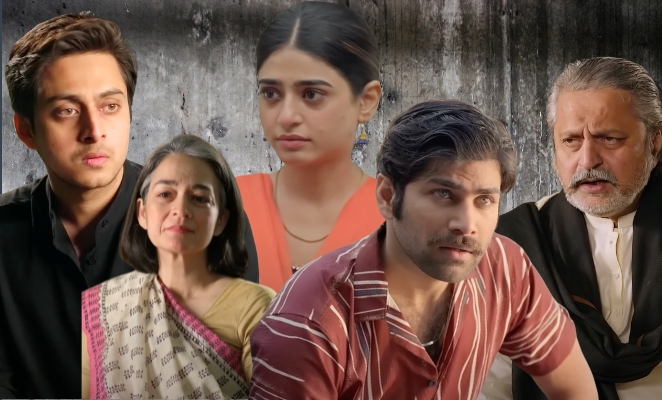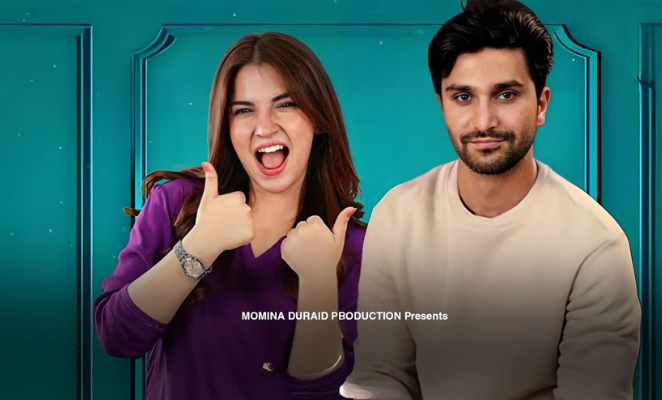As-Salaam-Walaikum, Khawateen aur Hazrat! Aap sabh ko Ramzan Mubarak!
I’ll be filling in for Sadaf this week, so, any and all opinions are mine and not a reflection on Ms. S. It’s been a while since we’ve met for a regular review. And boy does it feel good to be back!
Writing a review is never easy, writing a review for a series you don’t watch is even harder, but the hardest of them all is when you dislike a series and you’re supposed to write an unbiased review. So here I am stuck between a rock and a hard place (take note there is an “and” and an “a” in that sentence).
Much has been said and written about Laa. Sadaf gave us a very honest opinion elsewhere another blogger (in our rather small Pakistani blogger-verse) couldn’t stop singing its praises especially those of “Sarmad Sehbai’s well-written first episode”. Now, call me blind but Laa is a big (not-so-)hot mess from the first episode on. The writing might be flawless (and I’ll get to that) but the execution is far from it.
In my opinion, Sebhai’s strength is his writing yet (and I speak only for myself) I am unable to see the power of his words in Laa. The magic of words, something our language has an innate ability to convey, is easily and very adroitly expressed by Sehbai. For instance, in Mah-e-Meer (and we’ve only seen the trailer) I can hear it, I can feel it, such that every nuanced rendition of the word chaand has a power to it that is indescribable. Loss, pain, pathos, suffering, these are just a few the emotions that his words have the power to convey. Then why does everything fall flat in Laa. Is it the delivery? Is it the execution? Is it the casting? Is it an emphasis on the visuals?
Sehbai’s emphasis on the visuals is a recurring theme. We see it in Mah-e-Meer, we see it here, and I’m pretty certain we’ll see it again. Now, I am a visual person, hello(!) I study architecture, so I’m fairly certain that I can maneuver my way around visual intricacies but when the visuals become overpowering at the expense of good writing, good acting, and good direction, then, I have my reservations.
Why do I have reservations?
Well let me start at the beginning of this week’s episode. Everytime Daaniyal’s BFF takes his name in that shrilly, high pitched voice of hers, every hair on my arms rises up like goosebumps. Dialogues that had (considerable) depth – what with that whole idea of Laa, a negation, a negative – were fed to us as though we were watching an episode of Sex and the City. Depth requires grittiness, depth is not pretty, depth is being hurt, depth is being vulnerable, and I saw none of the grime and grit in Danniyal’s reaction. For a man whose life has been shattered, his world broken, Danniyal seems to be in a state reminiscent of a really bad hangover – his loss reeks of artifice.
Sorry Meekal even you couldn’t pull this off with your dimpled and gora cheeks, as you rush off to the dargah to seek solace. Although you do look very good.
Now, I know the feeling, the number of times I’ve headed to Hazrat Nizamuddin for matters far less trivial than what Daaniyal has gone throughis testament to the power of belief, which I understand, but why, then, do I have a hard time watching it and (more importantly) believing it. I’m having a hard time empathizing with any of these characters and that makes for a less than stellar viewing experience.
If Daaniyal’s shattered life lacks depth then Naina’s heartbreak feels equally unreal. Sadia Khan comes across as very pretty mannequin with no capacity to emote. Harsh as this might be, I say this because it seems to be a recurring trend with HUM TV, the channel that gave us both depth and emotion in Humsafar, Shehr-e-Zaat, Dastaan, and Durr-e-Shawar, to mention but a few. So why the likes of Laa, Ahista Ahista, and Janam Jali, and why now? Kyun? Have we run out of compelling stories? Are our directors on a sabbatical? Kya writers ki maat mari gayee hai?
With so much pain to draw upon all Naina and her mother can concentrate on is izzat wala khandaans. The number of times I’ve heard izzat wala khandaans at home with their rishtas makes me gag but another story, another time (woh kya kaha tha Manto nay…). Another sequence that could have been riveting and moving was Naina’s acceptance of her mothers will – mein shaadi kay liya taiyar hoon aap jahan karna chahain kar dain. This scene could have made the entire episode had it been dealt with maturity. Instead we were served a melodramatic, background score-laden goodbye to Laa, Daaniyal’s nishaani with Naina.
As if on cue enter trouble (with a capital T), which goes by the name Laila. Again bad casting here – this was a role meant for Saba Qamar. Laila is ostensibly the key to Daaniyal’s questions but she also comes laden with a treasure trove of secrets. One of those secrets being Dilawer. This addition tightens our plot and we’re slowly on our way to more drama, if only it was the kind I’d want to watch.
Till Sadaf gets back,
This RB signing off (Tweet me!)
P.S. Dilawer does carry that mustache off with panache.




 THE QUEEN OF MY DREAMS
THE QUEEN OF MY DREAMS  A heartfelt story
A heartfelt story 


 This summer, let your child explore,
This summer, let your child explore, 






 Saim
Saim 


